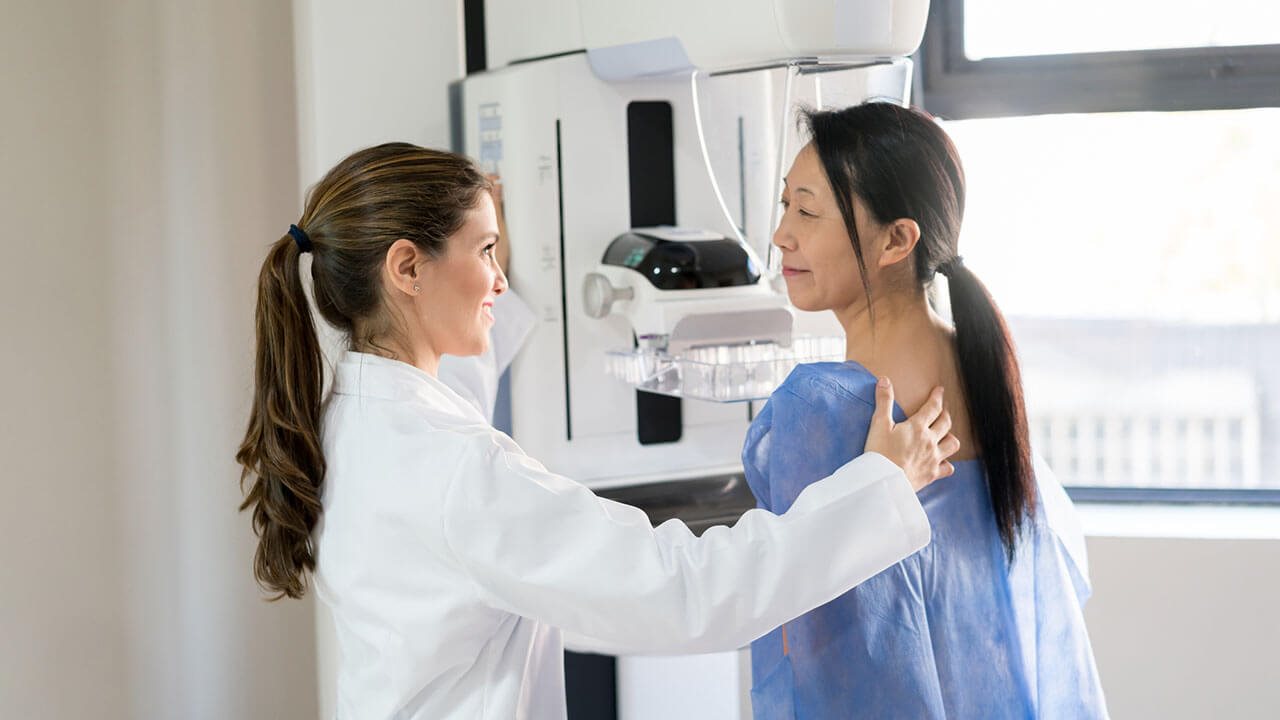HER2 stands for human epidermal growth factor receptor 2. It is a gene that makes a protein found on the surface of all breast cells. It is involved in normal cell growth.
Genes are the basic units of heredity, passed down from your mother and father. In certain cancers, especially breast cancer, the HER2 gene changes and makes extra copies of the gene. When this happens, the HER2 gene makes too much HER2 protein, causing cells to divide and grow too fast. Cancers with high levels of the HER2 protein are known as HER2-positive. Cancers with low levels of the protein are known as HER2-negative. About 20 percent of breast cancers are HER2-positive.
HER2 testing looks at a sample of tissue. The most common ways to test tumor tissue are:
Immunohistochemistry (IHC): Measures the HER2 protein on the surface of the cells
Fluorescence in situ hybridization (FISH): Looks for extra copies of the HER2 gene
Both tests determine whether a person has HER2-positive cancer. However, HER2 testing is also used to see if cancer is responding to treatment or if cancer has returned after treatment.
Most HER2 testing involves taking a sample of tissue in a procedure called a biopsy. There are three main types of biopsy procedures:
Once collected, the tissue sample will be tested to determine the HER2 protein levels and to see if there are any extra copies of the HER2 gene.
If HER2 protein levels are higher than normal or extra copies of the HER2 gene are found, it’s likely a HER2-positive cancer diagnosis. If the results show normal amounts of HER2 protein or the normal number HER2 genes, it’s likely an HER2-negative cancer diagnosis.
Treatments for HER2-positive breast cancer can substantially shrink cancerous tumors, with very few side effects. If you are being treated for HER2-positive cancer, normal results may mean you are responding to treatment. Results that show higher than normal amounts may mean your treatment is not working, or that cancer has come back after treatment.
This just scratches the surface, to learn more visit breast360.org.
Genes are the basic units of heredity, passed down from your mother and father. In certain cancers, especially breast cancer, the HER2 gene changes and makes extra copies of the gene. When this happens, the HER2 gene makes too much HER2 protein, causing cells to divide and grow too fast. Cancers with high levels of the HER2 protein are known as HER2-positive. Cancers with low levels of the protein are known as HER2-negative. About 20 percent of breast cancers are HER2-positive.
HER2 testing looks at a sample of tissue. The most common ways to test tumor tissue are:
Immunohistochemistry (IHC): Measures the HER2 protein on the surface of the cells
Fluorescence in situ hybridization (FISH): Looks for extra copies of the HER2 gene
Both tests determine whether a person has HER2-positive cancer. However, HER2 testing is also used to see if cancer is responding to treatment or if cancer has returned after treatment.
Most HER2 testing involves taking a sample of tissue in a procedure called a biopsy. There are three main types of biopsy procedures:
- Fine needle aspiration biopsy: Uses a very thin needle to remove a sample of breast cells or fluid
- Core needle biopsy: Uses a larger needle to remove a sample
- Surgical biopsy: Removes a sample in a minor, outpatient procedure
Once collected, the tissue sample will be tested to determine the HER2 protein levels and to see if there are any extra copies of the HER2 gene.
If HER2 protein levels are higher than normal or extra copies of the HER2 gene are found, it’s likely a HER2-positive cancer diagnosis. If the results show normal amounts of HER2 protein or the normal number HER2 genes, it’s likely an HER2-negative cancer diagnosis.
Treatments for HER2-positive breast cancer can substantially shrink cancerous tumors, with very few side effects. If you are being treated for HER2-positive cancer, normal results may mean you are responding to treatment. Results that show higher than normal amounts may mean your treatment is not working, or that cancer has come back after treatment.
This just scratches the surface, to learn more visit breast360.org.



